A few weeks ago I returned to Wisconsin and visited the Menominee Nation for the first time. (My previous travels to Wisconsin have taken me to the Red Cliff Band of Lake Superior Chippewa, Sokaogon Chippewa Community, Ho-Chunk Nation, Oneida Indian Nation and St. Croix Chippewa Indians.)
The Menominee are one of the few tribes in the region to have originated close to their present reservation, which is located about 45 miles northwest of Green Bay. Most other tribes were driven hundreds, if not thousands, of miles from their ancestral lands in other states and even Canada to present-day Wisconsin.
I planned extra time the day I arrived to visit the Menominee Cultural Museum. Built in 2010, this facility houses a beautiful collection of artifacts depicting Menominee culture, history and language, many of which are on loan from the Wisconsin Historical Society.

From beaded moccasins, belts and dance regalia, to birch bark canoes made with no modern tools, to baskets galore and war clubs and a war bonnet — the pieces are dazzling. Most impressive is the 11-foot-6-inch tall, 1,700-pound Ancestral Bear Carving. Carved from a 119-year-old butternut tree on the reservation using traditional hand-carving techniques and no modern-day power tools, the bear stands as a testament to the Menominee people’s creation.
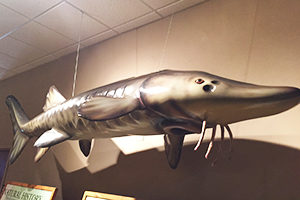
The museum also contains a fascinating exhibit on sturgeon. Sturgeon have retained several characteristics of primitive fish, including a skeleton of cartilage and no vertebra, bony plates called scutes instead of scales, and a back fin shaped like a shark’s. These fish are culturally and spiritually significant to the Menominee, who relied on the spring sturgeon migration in the nearby rivers to replenish the dwindling stores of food from the long winter. The Menominee still celebrate the sturgeon with yearly spring ceremonies and dancing.
I also really enjoyed the intricate carvings that represent the nation’s five principal clans, each of which have specific cultural responsibilities and multiple sub-clans:
- Bear Clan – “The Speakers”
- Subclans = Sturgeon, Otter, Beaver, Mud Turtle, Porcupine, Muskrat and Sunfish
- Eagle Clan – “The Warriors”
- Subclans = Crow, Fork Tail Hawk, Raven, Red Tail Hawk, Swift-Flying Hawk, Bald Eagle, Fish Hawk, Sparrow Hawk and Winter Hawk
- Wolf Clan – “The Harvesters”
- Subclans = Dog, White Tail Deer, Fox and Pine Squirrel
- Crane Clan – “The Menominee Builders”
- Subclans = Great Blue Heron, Old Squaw Duck, Coot, Loon and Turkey Buzzard
- Moose Clan – “The People of the Wild Rice”
- Subclans = Elk, Marten, Fisher and Raccoon
(Photos are organized in gallery as listed above)
For more information on the Menominee Clans, click here.
Unfortunately I arrived too late in the day to take the 90-minute tour of the next-door Logging Camp Museum — the most complete logging museum in the country today. Construction on the camp began in the late 1960s, and the completed camp now includes a bunk-house, cook shanty, butcher’s shop, blacksmith shop, saw filer’s shack, horse barn and camp office, in addition to thousands of logging items.
For centuries, logging has been a traditional operation of the Menominee Nation where the surrounding Menominee Forest contains 33 native species of trees. Menominee Tribal Enterprises (MTE) was formed in 1854 and currently employs 300 people who manage the forest and the tribe’s timber operations. MTE practices sustainable forestry methods and holds a Forest Council Management Certificate from the Forest Stewardship Council. MTE has also won several state, national and international awards for sustainable forest management, including the President’s Award for Sustainable Development conferred by President Bill Clinton in 1996.
Every tree is numbered and measured; as of last count, there were 58,000 trees. Because of MTE’s stewardship, there is now more standing timber today than there was in 1854, even with 2.25 billion board feet harvested from the forest over the last 140 years.
In 2010, MTE opened a millwork division that creates custom, handmade cabinetry, trim, moldings, furniture and caskets. I had the opportunity to visit one of the tax credit homes Travois consulted on to see first-hand the beautiful cabinets and moldings the housing department incorporates into their housing units.
With this trip to Menominee, I’ve now visited six of the state’s 11 federally recognized tribes — more than half way there! I really enjoy visiting Wisconsin and hope to return again soon.


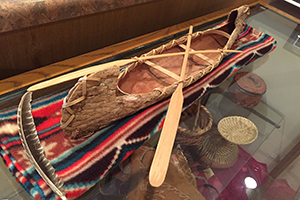
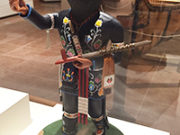
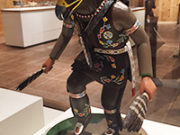
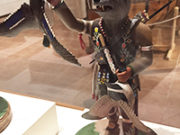
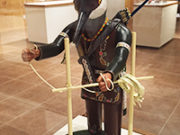
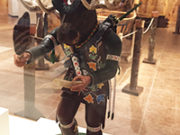
Great article I am a proud member of The Menominee Nation and I am grateful that you came to see all the beautiful artifacts I wish you well on your journey.